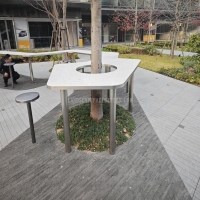Welcome to the website for landscape facilities products and knowledge.
What is the table’s resistance to oxidation or rust in metal components?
Metal tables demonstrate varying degrees of resistance to oxidation and rust depending on their composition, protective treatments, and environmental exposure. Oxidation occurs when metal surfaces react with oxygen, while rust specifically refers to iron oxide formation on ferrous metals. The resistance mechanism begins with material selection – stainless steel contains chromium that forms a passive oxide layer, while aluminum naturally develops a protective aluminum oxide coating.
Modern manufacturing enhances this inherent resistance through advanced techniques. Powder coating creates a durable polymer barrier that physically separates metal from environmental moisture and oxygen. Galvanization involves zinc coating that sacrificially protects underlying steel, while anodizing thickens aluminum's natural oxide layer for superior protection. The effectiveness of these treatments depends on coating thickness, application quality, and regular maintenance.
Environmental factors significantly impact oxidation resistance. Tables in coastal areas face salt-induced accelerated corrosion, while industrial environments present chemical challenges. Proper design features like water drainage channels, rounded edges that prevent coating thinness, and minimal weld points contribute to long-term durability. Regular cleaning with pH-neutral solutions and immediate scratch repair maintain protective integrity, ensuring metal tables withstand oxidation threats throughout their lifespan.
Related search:

Recommendation
An outdoor bar counter with stainless steel and terrazzo materials in an irregular shape